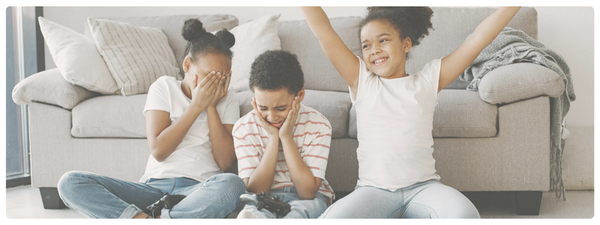As digital parents, many of us are looking for clarity, not just about how much screen time our kids should have, but how to make sense of it all. With so many expert opinions, rules of thumb, and internet hot takes, it’s easy to feel lost.
Making things harder? Our kids are constantly growing, maturing, and developing, so by the time we feel caught up on the research — BAM — the next birthday lands! When it comes to screen time recommendations by age, my advice is to remain flexible, context-aware, and focused on the purpose of the screen’s use, not just the duration of the digital engagement.
Just how much screen time is okay for kids at those pivotal ages between 4 and 7, when school, socializing, and entertainment become such real parts of their lives?
This is one of the most common age groups that parents ask about, because there is so much change in the lives of our children in this short four-year span. While it’s natural to focus on daily limits, hard limits often fall short. The bigger picture matters more — how to create flexible, developmentally aligned screen time boundaries that actually work for your family.
Screen time isn’t just about minutes on a clock, it’s about what your child is doing, how they’re engaging, and how it fits into the rest of their day.
This guide is here to help you understand screen time recommendations for 4–7-year-olds, why this age is unique, and how to set a healthy, balanced routine that works for your family.
How Much Screen Time is Recommended for Kids Ages 4-7?
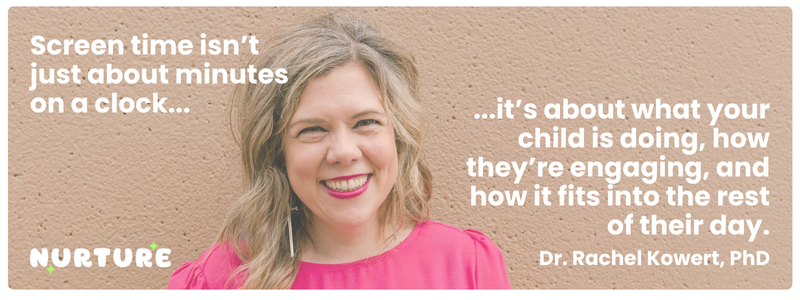
Remember, these guidelines were developed to provide a helpful benchmark, but they are not prescriptive. Every family is different, and you are the best judge of what's best for you and your family.
What the Research Says
- Ages 2–5: The American Academy of Pediatrics (AAP) and World Health Organization (WHO) recommend no more than 1 hour per day of high-quality content, ideally co-viewed with a caregiver.
- Ages 6–7: The AAP shifts to a more flexible approach here, and instead of a hard time limit, families should create personalized plans that balance screen use with sleep, physical activity, and offline play.
That flexibility reflects a growing understanding: not all screen time is created equal, and not every child (or every day) is the same.
Why This Age Group Is Unique
The early childhood ages, which include ages 4–7, are a foundational stage of cognitive, emotional, and social development. Children are learning how to regulate attention, process emotions, and build relationships.
Used intentionally, screens can help support this development — learning, play, and even social growth. While we shouldn't think of them as replacements for non-screen activities, screen-based experiences can be one of many ways to support development in early childhood.
Screen Time for 4-Year-Olds
Developmentally, children at this age are in what psychologist Erik Erikson called the initiative vs. guilt stage. They’re learning to take initiative and explore their world. One way to support children’s initiative is by letting them guide some of their screen use. Some kids may gravitate toward art apps, while others love language games. Let them take the lead.
It is important to remember that at age 4, most children are still highly concrete learners, meaning they learn best through hands-on experiences and practical applications. They may benefit most from short, co-viewed sessions of more interactive content. For parents, that means watching together and talking about what’s happening on screen.
If you want to follow the AAP guidelines, aim for one hour of screen time per day.
Screen Time for 5-Year-Olds
Five-year-olds may show more interest in independent screen use, but should still have close supervision. Parents should continue to encourage active, educational content over passive viewing.
Given their slightly more advanced level of cognition and activity, you may want to consider more flexibility in time limits. For example, at this age, they can likely sit through a movie that is one to two hours long on a weekend.
Screen Time for 6-Year-Olds
At six, children are developing stronger attention spans and reasoning skills. They’re likely to be ready for more interactive learning tools. This is a good age to start to explain screen balance, helping them plan when and how to use screen time wisely.
Kids around this age shift into what Erikson identified as the industry vs. inferiority stage. They’re developing a sense that they can accomplish things — that their effort matters. This is where screens that support creativity, project-building, or skill mastery (like games or digital tools) can be especially meaningful.
Kids of this age can also likely make a meaningful contribution to a conversation about screen time and digital device usage. At this age, they are definitely old enough to be directly involved in making your family’s media plan.
Screen Time for 7-Year-Olds
By age seven, kids are becoming more socially aware and independent. Their screen time use often reflects peer interests. But they still need boundaries and parental involvement. Ask them to explain what they’re doing or watching and why they enjoy it. This builds digital literacy and strengthens your connection.
Seven is often a pivot point where games start to become more interesting, especially ones that can be played with friends and family members. This is not only because, as children get older, they are better able to successfully navigate more complicated spaces, but also because they are probably receiving recommendations from their friends at school!
Instead of rigid caps, focus on balance and content, especially during school breaks or social downtime.
Quality Over Quantity – Why Screen Time Limits Are Evolving
While screen time recommendations are a good starting point, quality matters more than quantity.
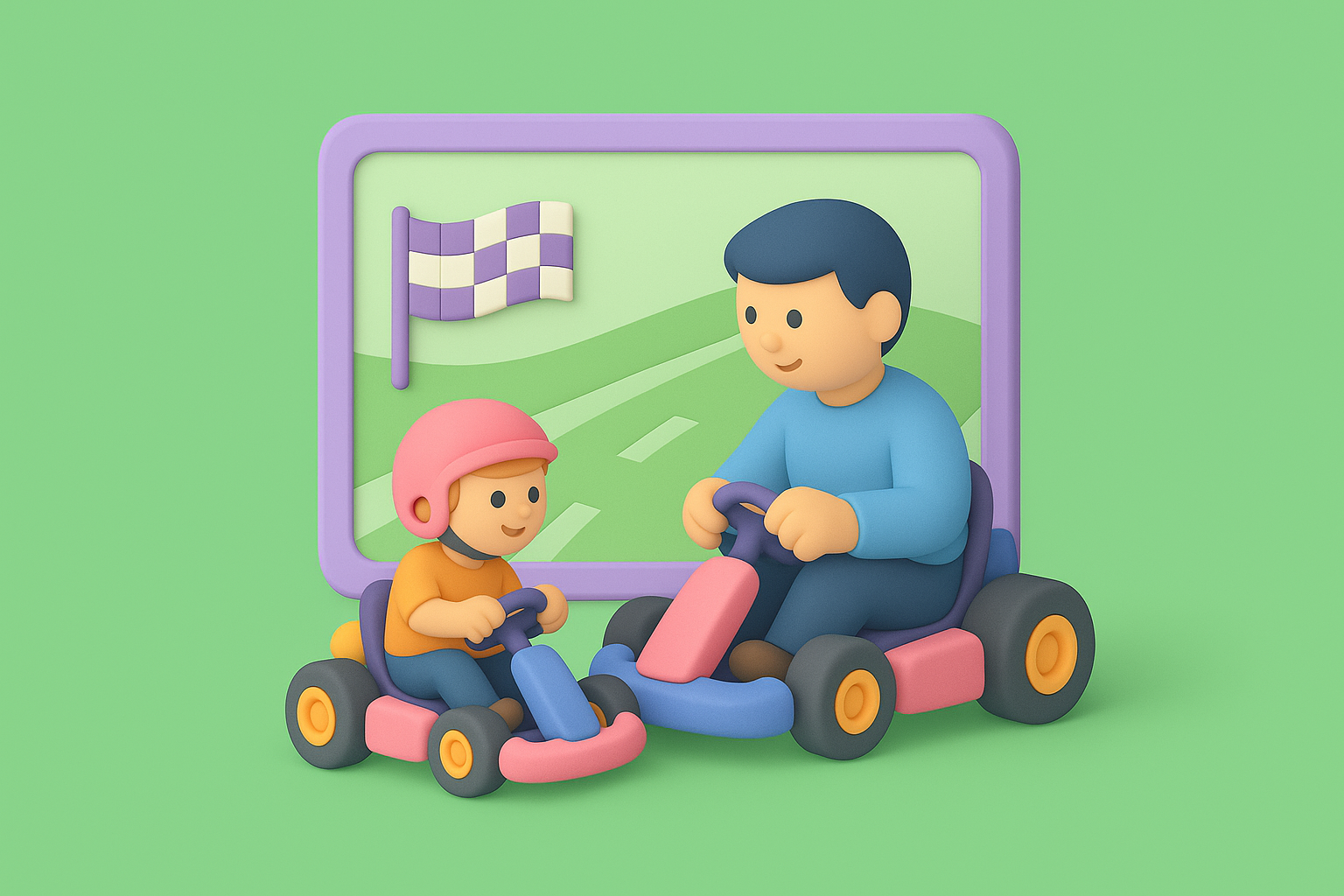
What Makes Screen Time “Better” for 4–7-Year-Olds?
While “better” is often what parents are looking for, it is not an easy thing to define because not all content is better for different people or even the same person on a different day. Instead of thinking about what might be “better” overall, consider these categories:
- Active vs. passive: Hands-on games, learning apps, and co-viewed shows are likely to promote deeper learning, engagement, and enjoyment than passive scrolling or watching TV in the background.
- Educational vs. entertaining: Look for content that teaches a skill, sparks questions, or promotes empathy. While entertainment is an important outcome in and of itself, if you are looking for something that moves beyond just something “fun to do,” look for an option that is purpose-built around learning.
- Shared vs. solo: Participating in screen-based activities with parents, siblings, or friends is going to lead to greater social benefits. Playing games is fun and all, but beating your parents at Mario Kart? That will be fuel for laughter and conversation for days.
How to Recognize Quality Digital Content
There are endless options beyond your basic cartoons and movies, although there’s still a place for fun, silly, or adventurous stories in helping kids relax and just be entertained for a bit. For more engaging options, you can look for options that:
- Have interactive elements (like puzzles or storytelling)
- Promotes creativity and critical thinking
- Encourages kindness, curiosity, or resilience
If you're looking for more specific content information, review sites like Common Sense Media can provide in-depth details to help you better evaluate the appropriateness of apps, games, and shows for your kids. However, don’t underestimate the power of your parental intuition.
You can learn more about evaluating the content quality of your kids’ screen time in my other post: “Better” Screen Time is More Than Just Minutes: Quality vs Quantity.
Balancing Screen Time with Off-Screen Activities
Screen time should be part of a balanced routine, not necessarily the main event. As part of an enriching mix of other activities, screen time is an excellent tool for parents to have a break and for kids to learn, relax, and engage.
We should remember that in addition to screen-based fun, we should be making space for:
- Outdoor play (movement, exploration, nature)
- Other hands-on activities (building, drawing, crafts)
- Non-digital reading and storytelling (science does suggest this helps with retention!)
- Unstructured downtime (yes, boredom is important!)
- Focused connection (family meals, playdates, cuddles)
And remember, screen-based activities can create the inspiration for non-screen activities.
- Does your child really like to play sports video games? Maybe you can snag some tickets to a local sporting event!
- Are they super into a new show their friends told them about at school? Let that be the subject of conversation at the dinner table.
- If they love fantasy games, take them to a Renaissance fair or help them sew a cosplay costume.
- Do they enjoy puzzles? Try a scavenger hunt or an escape room!
Understanding their digital interests can not only spark shared offline activities but also strengthen our relationships (our kids want to know we are interested in what they are interested in… even if we don’t fully understand the appeal of video games, anime, or whatever else they might be into).
During the early childhood years, kids will likely still need support to navigate screen time transitions. This will help them turn it off without battles and ease into other activities smoothly. Give countdowns, use visual timers, and end on natural stopping points, such as after an episode or game level.
This includes helping your kids recognize when they’ve had enough so they can naturally build those habits and awareness. Ask them when they feel would be a good stopping point, help them check in with their feelings, and encourage them to notice how their eyes, neck, and back feel after watching a screen for a while.
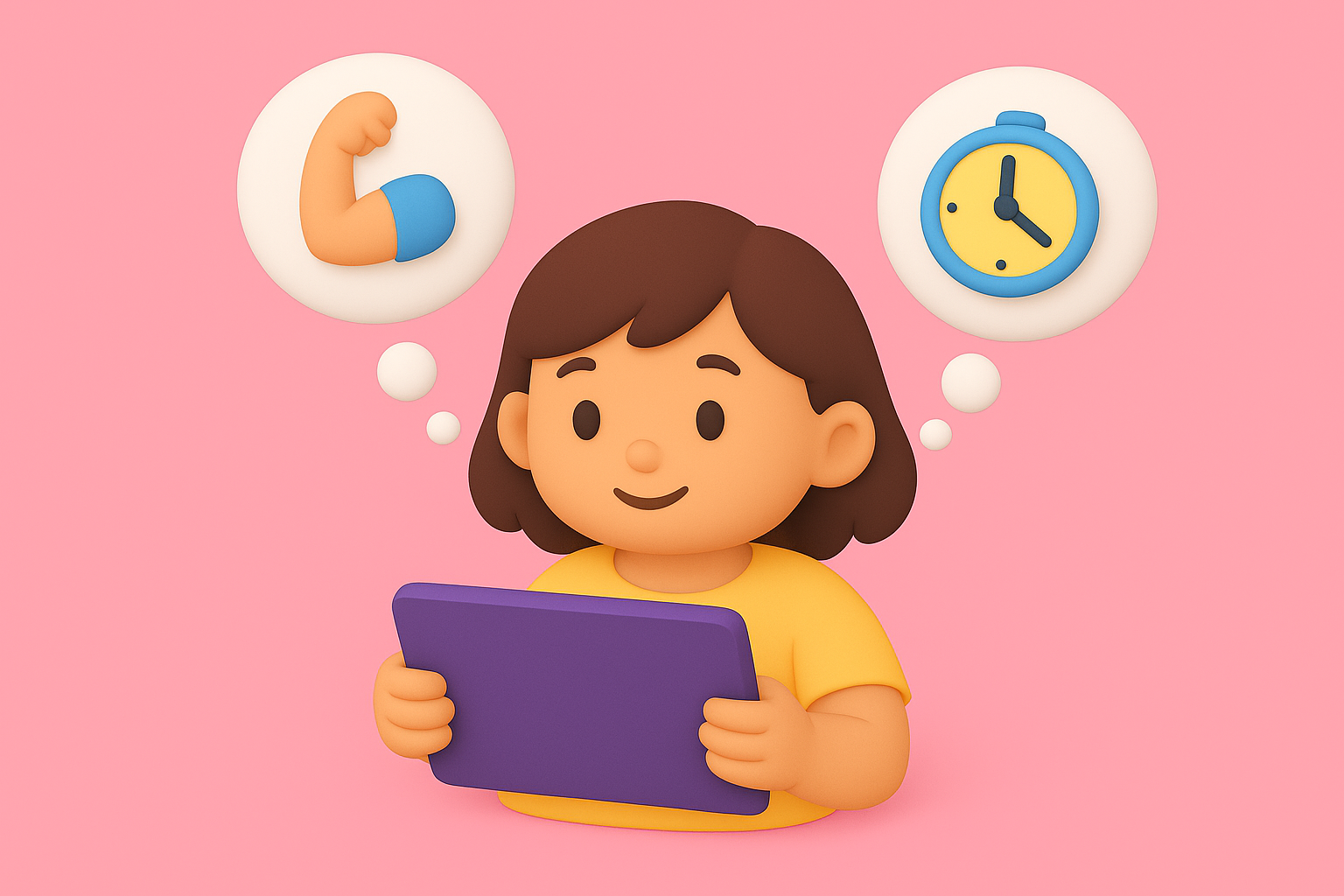
You also want to be sure you’re modeling healthy, balanced screen time habits for your kids, especially as they become more aware of the world around them. You can embrace “tech-free” mornings or a “parking spot” for devices during family time.
Warning Signs of Too Much Screen Time in 4-7-Year-Olds
Screens are not inherently a threat to your kids’ wellbeing, but it’s still important to understand how overuse can impact their mood, sleep, and development. Focus on patterns observed over time, rather than just one-offs. If screens are becoming a way to avoid, rather than engage, or if they’re replacing activities your child used to enjoy, that’s worth checking in on.
Do your kids resist screen time transitions every time, melting down over any mention of turning it off? Are they avoiding offline activities or only seeming to choose screen time, even when exciting, hands-on, social activities are offered? These might be signs that they are getting too attached to screen time, and pulling back can help them reorient to a balanced state.
Likewise, if they’re having trouble falling asleep at night, especially after using screens at bedtime, that’s a sign to reduce it. Problems paying attention to other things, such as reading, eating, or co-playing, can also inform you of screen overuse.
Changes in mood might also be a sign. If you notice incessant crankiness, sudden changes in attitude, or other unusual behavior patterns, reducing screen time can be a good step in understanding what works best for them.
None of these mean something is wrong, necessarily, but if the pattern continues, it may be helpful to revisit your digital wellness plan or consider other health issues with a pediatrician. But the occasional weekend binge-watch of their favorite cartoon is not a reason for concern.
Prioritizing Quality and Balance over Time Limits
When it comes to addressing screen time at every age and phase of our kids’ lives, we can move away from fear to focus on what works in each unique situation.
As your child matures, your role as the digital parent also shifts. When they’re four, you’re curating everything. By seven, they’re asking to play what their friends are playing. That evolution means you’re moving from gatekeeper to guide. That means staying involved, asking better questions, and encouraging healthy choices.
Strictly time-based limits may be helpful starting points — a good bucket you can fill with different types of screen time — but time itself is just one element of your child’s digital diet. What matters most is:
- Supporting their development
- Encouraging curiosity and creativity
- Modeling healthy tech habits
- Making space for both digital and off-screen experiences
With thoughtful, flexible boundaries, we can guide our kids to develop healthy screen habits without shame, rigid rules, or constant battles.
After all, raising digitally well kids starts with being wise, thoughtful, and engaged digital parents. If you’re ready to go deeper, head to (and bookmark) The Parent's Guide to Screen Time for Kids: What Research Reveals.


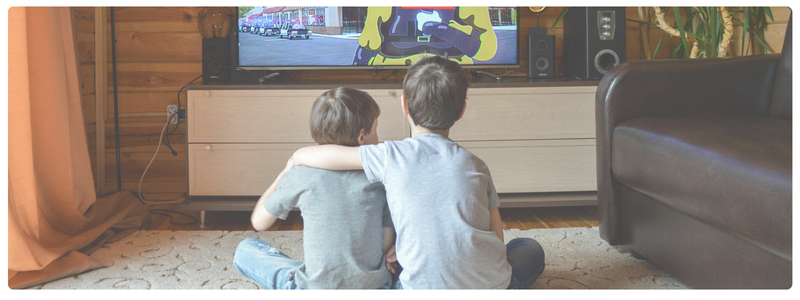


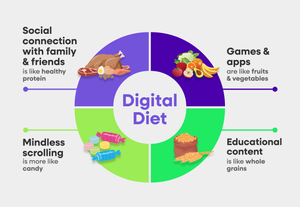
 Copy Link
Copy Link
 Share
to X
Share
to X
 Share
to Facebook
Share
to Facebook
 Share
to LinkedIn
Share
to LinkedIn
 Share
on Email
Share
on Email



